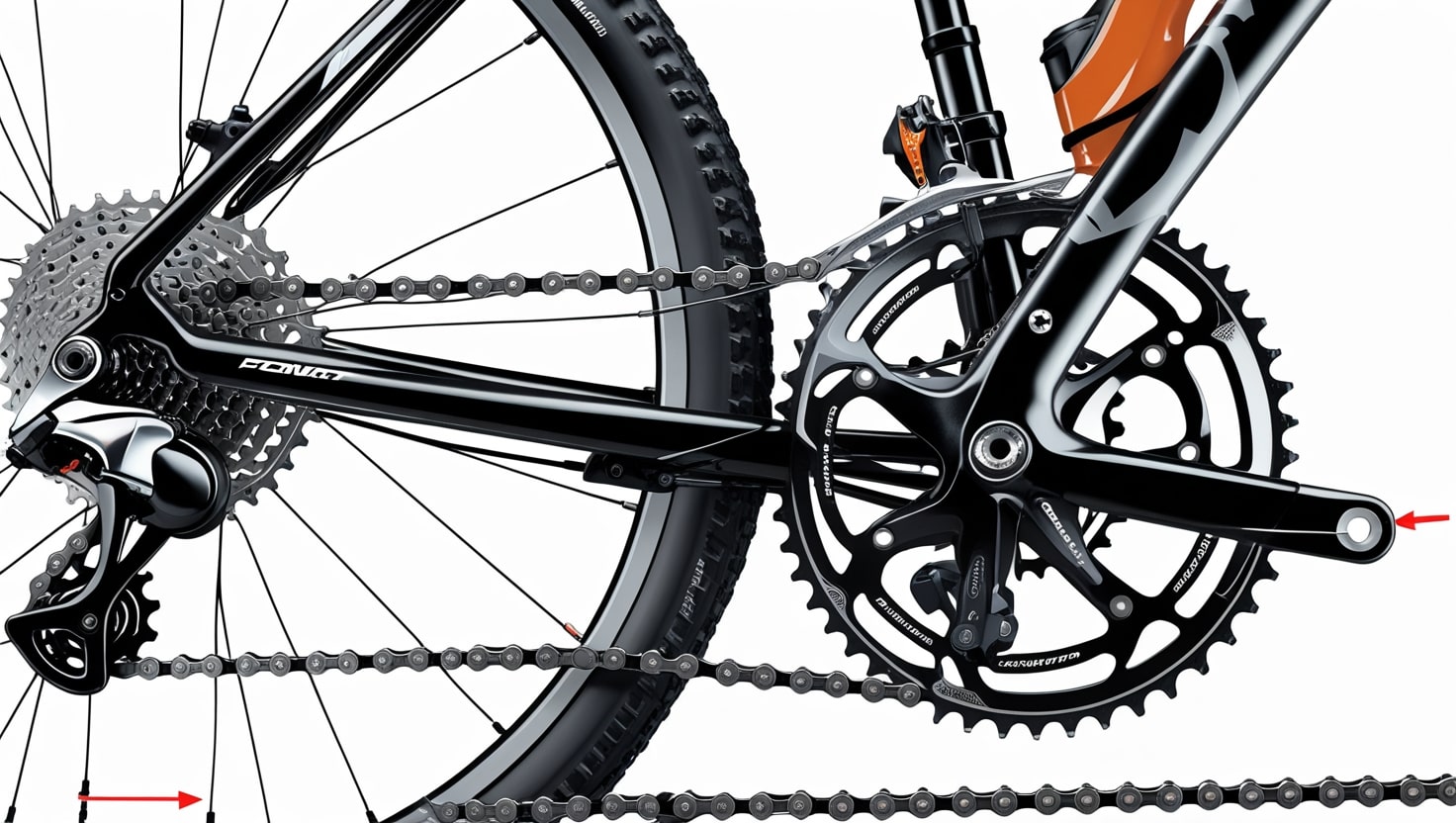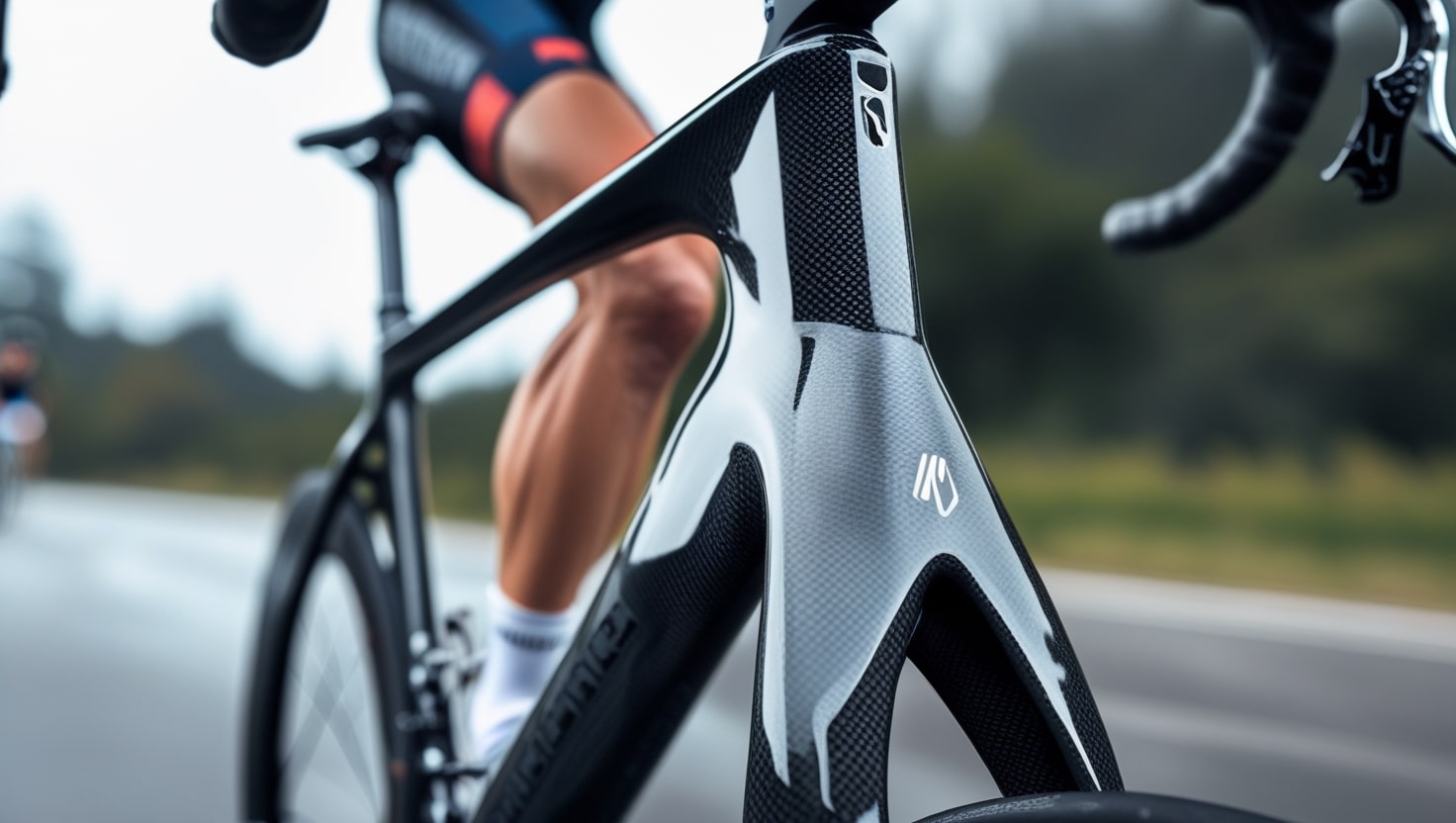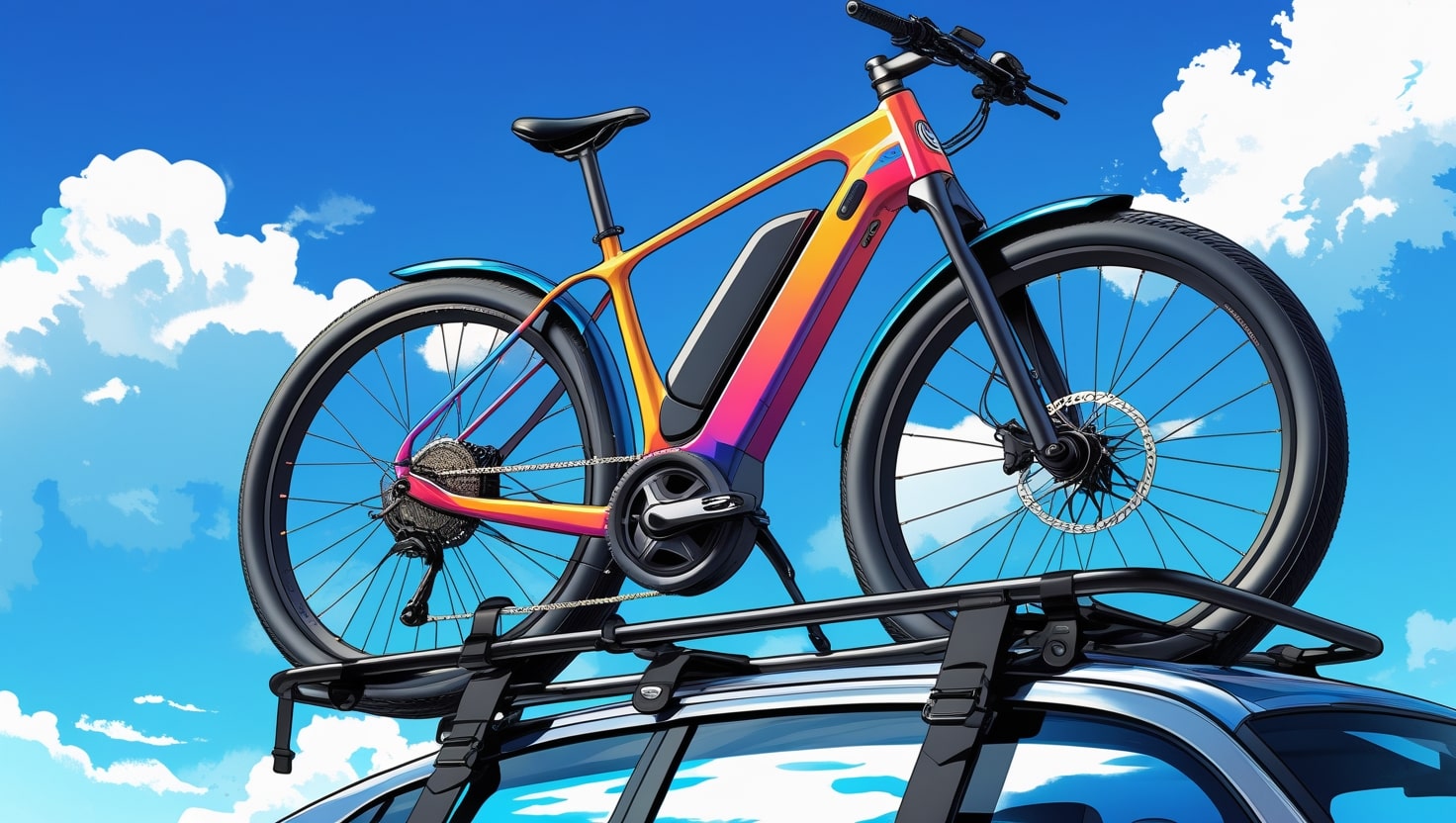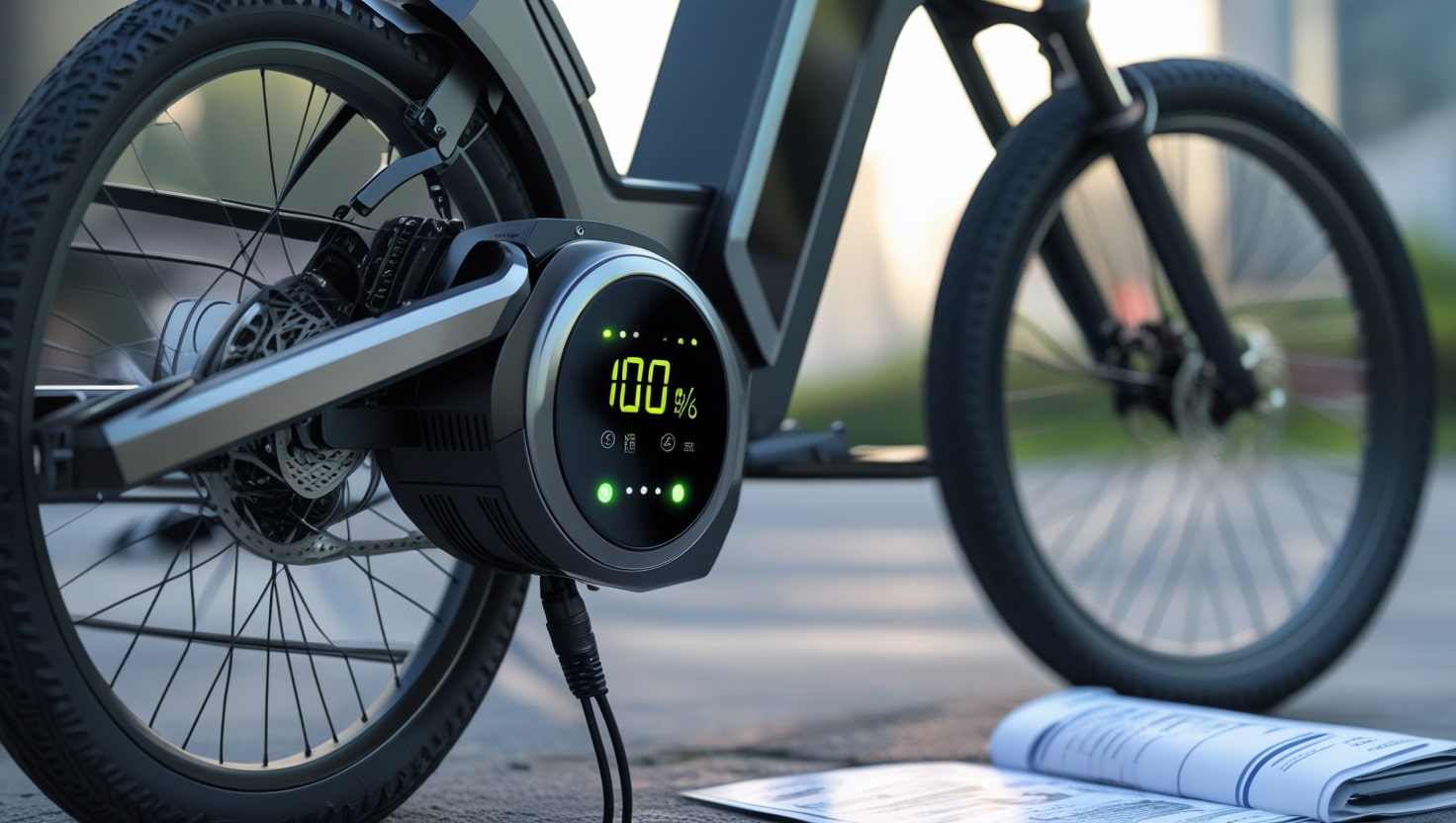When I first started cycling seriously, I didn’t think much about gears—I just wanted to enjoy the ride. But over time, I realized that understanding the basics of how does bicycle gear works changed everything. Whether you’re pushing through tough climbs or gliding across open flats, your gear choice can make or break the experience.
A smooth cadence helps maintain energy, and learning how to match your pedaling to the terrain—be it gravel roads or smooth road surfaces—takes both time and knowledge. I found myself struggling during group club rides early on, but once I began to understand fundamentals like selecting the right gear for the situation, my confidence and control improved.
Different riders prefer different set-ups, and brands like Shimano, SRAM, and Campagnolo offer a variety of groupset options with 10, 11, 12, or even 13-speed configurations. I experimented with a 1x chainset on my gravel bike, appreciating its simplicity on rougher routes. But for longer solo rides or keeping pace on a run with friends, a double ring or compact rings near the cranks gave me more range.
Bike Gear’s Origin Story
Back in the 1870s and 1880s, bikes looked nothing like what we see today. The penny-farthing, which is also sometimes called the “high-wheel bike,” was an early type of bicycle. I remember spotting one at a vintage fair—its massive wheel towering over everything else. What made it interesting was that it had no gear system.
The pedals were directly attached to the front wheel, and each rotation moved the rider forward based solely on the wheel’s circumference. With a diameter of nearly 7 feet, one revolution would send the bike rolling several inches—enough to cover about 2.8 miles per hour if you pedaled at 60 rpm.
The shift toward the safety bicycle in the 1890s changed everything. These new bikes were closer in appearance to what we now consider contemporary models. They had two wheels of equal size, a stable frame, and the crank and pedal system was placed between them. A chain was introduced to connect the crank to the rear wheel, allowing power transfer with much more control.
By the early 1900, bike makers had nailed down many of the parts we still use today. You had to understand how gear ratios worked, how to adjust your speed depending on terrain, and how to maintain a smooth ride without overexerting.
Everything from the wheel’s circumference to the rider’s cadence at 60 rpm played a role in performance. Even as a casual rider, once I understood the relationship between rotation, crank, and chain, biking became less about guessing and more about mastering momentum.
how does bicycle gear works: the basics
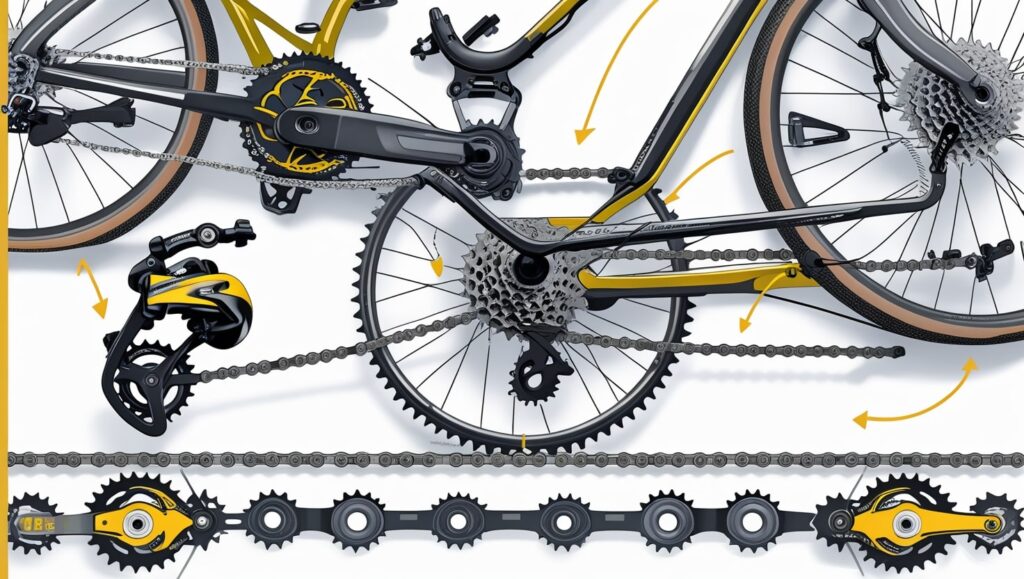
What determines the number of bike gears you have?
One of the first things I learned about my bike setup was that the number of gears isn’t just random—it’s basic multiplication. You simply multiply the number of sprockets at the rear by the number of chainrings at the front. For example, a 12-speed cassette paired with two chainrings gives you 24 gears. If you’re using an 11-speed cassette with the same setup, you’ve got 22 gears instead. Some bikes even use a triple chainrings setup with an 8-speed cassette, which also results in 24 gears.
Why do you need gears on a road bike?
When you’re out on the road, the terrain isn’t always your friend. One moment you’re descending a steep hill, and the next you’re grinding up a sharp climb. Having a wide range of gears lets you adjust to these sudden changes. A big front chainring combined with the smallest rear sprocket—something like 50×11—is great for high-speed descending, while the lowest gear setup helps when you’re climbing a hill and trying to keep your legs spinning smoothly. This is what makes modern road bikes so versatile—they offer the choice and ratios needed to keep you moving with control.
Think of your bike like a car. Using the wrong gear at the wrong time—say, a low gear at high speed—will burn more fuel, or in your case, energy. That’s why newer cassettes, like 12 or 13-speed, offer smaller jumps between sizes, reducing the gaps between gears. This smooth progression improves efficiency, so you don’t lose momentum or overwork your body. I used to ride an older nine-speed setup with an 11-28t range, and I remember how frustrating it was trying to find the perfect gear on rolling hills.
Modern bikes solve that problem with extra teeth on the cassette, giving you more options to accelerate, hold a steady cadence, or just cruise comfortably. With better shifting, you avoid the awkward jerk when the chain struggles to drop down or overcome the jump to a bigger gear. That means a smoother ride overall, even on tricky terrain with sharp gradients.
And whether you’re sprinting for speed, climbing steeply, or starting from a standstill, having more than just a single gear gives you flexibility for any situation. Cyclists today benefit from intelligent mechanical designs that balance power and consumption, much like advancements in cars. I always say: it’s not about going faster, it’s about riding smarter—and smart gearing helps keep your cadence and pedalling efficient from start to finish.
Why do some people opt for a single speed bike?
Not every rider needs a multi-geared bike with 33 options and complex shifting systems. In fact, many commuters living in flat areas prefer singlespeed bikes because they’re simple and require less maintenance. With just one gear, determined by the size of the front chainring and rear cog, there’s no need to worry about crossing the chain or dealing with overlapping ratios like 53×19 or 39×14. For some, like track racers or hill climbers, cutting down weight and avoiding mechanical complication makes a single set-up an ideal choice.
When I first tried a single-speed bike, the biggest difference I noticed was the improved efficiency in my pedalling. I didn’t waste energy figuring out which gear to use. Instead, I focused on my riding and rhythm. But picking the right gear ratio is crucial, especially if you’re riding through changing terrain. Some riders swap gear setups between events to best suit the extremes they expect—proving there’s no one-size-fits-all solution.
Even though having a wide range of gears offers flexibility, there’s something appealing about the simplicity of a singlespeed. Without overlapping combinations, crossing risks, or tight spaced changes, you’re left with a cleaner, more focused ride. The lowdown is this: whether you’re one of the casual cyclists looking to cruise efficiently or a competitive rider wanting the most streamlined setup, understanding your abilities, the options available, and how to determine your ideal gearing system is the real point of learning how bicycle gears work.
Guide to different types of bike gears and how they work
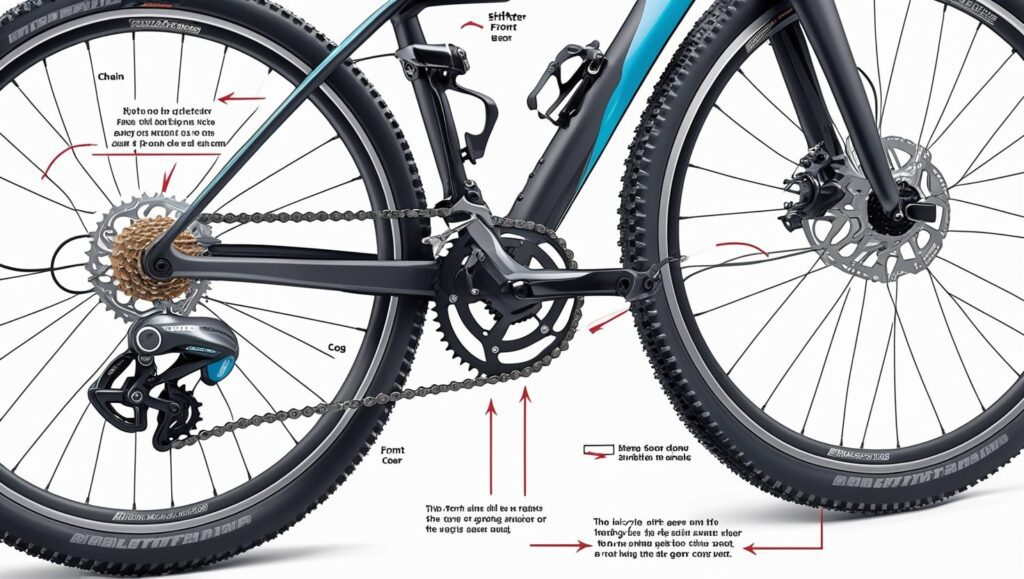
Standard double:
A standard double gear setup is a popular choice among road cyclists, especially in racing. It uses two chainrings at the front combined with up to 9, 10, 11, or 12 sprockets at the rear, giving a wide range of gears for different riding needs. The classic 53-39t combination is often seen in older bikes, but it’s still favored for its ability to support high speeds.
The largest chainring allows riders to keep pedaling smoothly when going fast, which is why it’s often chosen by competitive cyclists rather than those who ride for recreational purposes.
Though this chainset offers strong performance, it isn’t ideal for those seeking very low gearing. While some reduction is possible with an inner ring as small as 38t, it doesn’t go as low as compact setups. Manufacturers still produce standard doubles, but they’re now less common on modern bikes aimed at casual riders.
Compact:
A compact gear setup is a smaller version of the double system, designed to give riders more control when climbing or riding long distances.In order to lower the gear ratio throughout the range, it usually has chainrings that are about 34 or 36 t for the inner and 48 or 50 t for the outer. This type of gear is especially useful for steep Alpine climbs where maintaining momentum matters.
I’ve personally used a compact setup while touring mountain routes and found that the reduction in gearing made the ride much more manageable. Even better, the top speed isn’t sacrificed, so you can still go fast on descents or when riding on flat terrain.
Some brands like SRAM use a 13-tooth differential in their chainsets, which means their options vary slightly from the standard. Pairing a compact with a 32t cassette gives a nice balance of lower gears for climbing while still keeping enough speed for quick descending.
Semi-compact:
The semi-compact setup has gained major popularity in recent years, especially among race-oriented riders. It’s commonly found on bikes designed for racing and high-performance riding, often with a double-ring arrangement at the front. Brands like Shimano and Campagnolo offer these systems with a 52t chainring paired with a 36t inner ring, giving a perfect combination of speed and climbing power. It’s smaller than a standard setup but slightly bigger than a compact one, allowing you to switch between flat sprints and mountain climbs without feeling over-geared or underprepared.
The way the cassette at the back matches the chainrings is what gives this arrangement its versatility. With 11-28, 11-30, or 11-32 options, you get enough range of gears and teeth to tackle tough gradients while still maintaining a fast cadence during group rides or sharp descending sections.
Triple:
A triple crankset isn’t as common on modern road bikes, but it’s still a smart option for certain riders. You’ll often find it on a hybrid or touring bike, especially when carrying loaded gear over long distances. The biggest benefit of a triple setup is the wide gearing range it offers without needing too many sprockets on the cassette, which also makes it a cheaper and more robust system. Thanks to the inner rings, riders can access a very low bottom gear, even lower than what you’d typically get on a double crankset, making climbs easier and smoother on extended tours.
SRAM AXS:
In 2019, SRAM introduced its wireless AXS system, bringing advanced shifting to riders of all levels. Found in lines like Red, Force, Rival, and Apex, the system is built with different chainrings such as 50/37T, 48/35T, 46/33T, and 43/30T, allowing plenty of options for various riding styles. What makes this system unique is the wide gearing approach and specially designed front derailleur, particularly in the “wide” builds that allow for better clearance and smoother performance.
The 12-speed cassette begins with a 10-tooth sprocket, allowing for tighter jumps between smaller gears and wider jumps between larger ones. This structure helps maintain a consistent cadence when riding fast on level terrain and offers lower gears for climbing gradients. The ability to shift effortlessly under load is incredibly beneficial, especially when you’re switching gears mid-climb.
1x or single chainring:
The 1x, or single chainring, groupset has become a favorite among riders who prefer simplicity and cleaner setups. Originally seen on track bikes and cruisers, it has now gained popularity in disciplines like gravel, crits, and even some races. Brands like SRAM, Shimano, and Campagnolo offer 1x offerings, with SRAM leading the charge through its AXS, Red, and other high-end systems.
Shimano’s GRX and Campagnolo’s Ekar are great examples too. These setups typically include 11, 12, or 13-speed cassettes, offering a wide enough gear range for all types of terrain, especially when matched with the right sprocket and rear derailleur.
One big advantage of a 1x setup is the lack of a front mech, making shifting more intuitive—just move the chain up or down the cassette. Many of these systems include a clutch mechanism to improve chainline stability and prevent drops. Whether you’re racing with WorldTour teams, tackling punchy stages, or a newbie just getting used to cycling, this design simplifies your ride while keeping performance high.
As a longtime cyclist, I’ve used multi-speed systems for years, but when I switched to a 1x setup on my gravel bike, the reduced maintenance and focused experience made it a perfect option for both performance and ease.
Hub gears:
If you’re looking for a low-maintenance and robust alternative to traditional derailleur setups, hub gears might be your perfect option. Found in bikes built for endurance, commuting, or casual rides, systems like the Rohloff 14-speed or options from Shimano, SRAM, and Sturmey-Archer provide internal planetary gearing enclosed within the rear hub.
These systems offer fewer exposed parts and require less maintenance, which makes them ideal for daily riders navigating traffic and stop-and-go moments at lights. Whether you’re using four, seven, eight, nine, or even 24-speed systems, the ability to shift without pedalling is especially helpful in city conditions.
You can still personalize your ride with different chainring and sprocket sizes, adjusting your ratios for your specific terrain. The choice of individual gears may be more limited compared to a derailleur, but the system remains practical for a wide number of use cases.
A newer player in this space is Classified, a Belgian tech company that launched its Powershift system in 2019, bringing wireless, electronic shifting to internal hubs. By 2021, they offered 24-gear hubs with instant shifting under load, now used in WorldTour races with major brands offering compatible wheelsets.
Related: What Muscles Does Bike Riding Work
How do road bike gear shifters work?
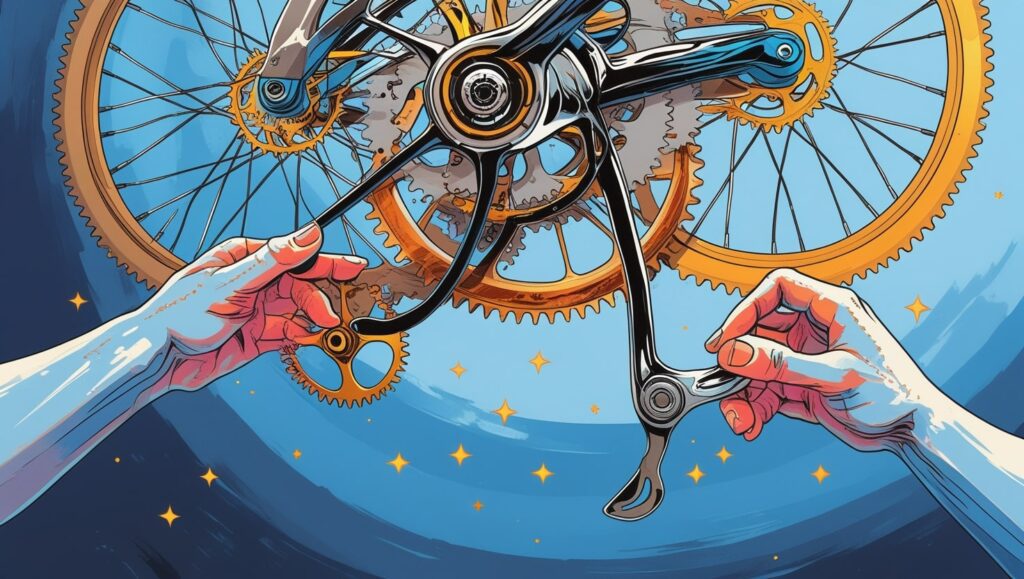
On a modern road bike, the shift levers are often built into the brake controls, and while the basics are similar across every brand, each rider can still find what suits their preference. With mechanical groupsets, your right-hand lever typically controls the rear derailleur, and the left one handles the front. Visit a local shop if you’re unsure—most will walk you through it.
For electronic systems, things get more advanced. Brands like Shimano (with Di2) and SRAM (with AXS) have released refined iterations that can be customised to match your exact needs. These shifting systems are some of the most advanced on the market, showing how smart designs continue to evolve for better control and efficiency.
How does electric road bike gear shifting work?

Shimano Di2:
Shimano’s Di2 electronic shifting system, found in their 105, Ultegra, and Dura-Ace groupsets, offers a seamless way to change gears using simple buttons rather than traditional mechanical levers. The setup follows the same basic principle as older shifters, where the right shifter controls the rear derailleur and the left shifter manages the front.
However, instead of pulling cables, the rider presses small buttons located behind the brake lever. On each lever, the inner dimpled or slim button is used to move the chain up to a bigger ring or up the cassette to easier gears, while the outer paddle-shaped button shifts the chain down to a smaller ring or into harder gears when you’re riding faster.
Having used both mechanical and electronic setups, I found Di2 incredibly smooth and responsive. With one light tap, you can shift with pinpoint accuracy—no more worrying about tension or cable stretch. Di2 simply lets you operate smarter and ride with confidence.
Campagnolo Super Record EPS:
Campagnolo’s Super Record EPS system blends tradition with modern performance. While its roots are mechanical, the EPS version brings wireless precision to gear control. On the right-hand shifter, there’s a button behind the brake lever that moves the chain up the cassette to an easier gear.
Meanwhile, a thumb button tucked inside the hood shifts it to a harder gear at the rear. Thanks to multi-shift, you can hold the button and shift through multiple gears at once until you release it—a feature that proves handy during quick terrain changes or sprints.
The pedal button on the left moves the chain from the inner small ring to the outer large ring, and back again when needed. Recently, Campag introduced the WRL version of Super Record—a groupset that goes wireless and removes the traditional thumb button, making the setup more in line with Shimano and SRAM systems.
SRAM AXS:
SRAM’s AXS electronic shifting system, used across groupsets like Red, Force, Rival, and Apex, offers a different experience compared to mechanical setups or even other competing systems. The default setting uses just two buttons, one on each brake lever. The right-hand paddle button shifts the chain down the cassette into a harder gear, while the left-hand button moves it up into an easier one.
To shift between the front chainrings, the rider simply pushes both buttons at the same time. The chain will move up or down depending on its current position, making the setup very intuitive. The whole system is also customizable, meaning you can change how each button behaves if the standard layout doesn’t suit you.
Related: Bike Packing Fork Bags
Glossary for understanding how gears on a bike work
Chainring: A toothed ring located at the front of the drivetrain, attached to the crank, and part of the chainring set that helps transfer power.
Cassette: A cluster of sprockets at the rear wheel that offers up to 12 gears of various sizes; it pairs with the chain to manage your gear range.
Block: An older term for a group of sprockets, often referring to a screw-on type freewheel used on older bikes.
Derailleurs: The front and rear mechanisms that shift the chain between sprockets or chainrings, allowing gear changes during your ride.
Sprocket: An individual gear on the cassette or block, identified by how many teeth it has.
Ratio: Describes the relationship between sprockets and chainrings, for example, 53×12 or 11-28, affecting pedaling efficiency.
t: Short for teeth, such as in 23t, indicating the size of a sprocket or chainring.
Drivetrain: Includes all parts involved in driving the bicycle forward—chain, cassette, chainrings, crank, and rear wheel—all working together for drive and control.
Cadence: Your pedaling speed, measured in RPM (revolutions per minute) of the crank, affects how smooth and efficient your ride feels.
STI lever: Short for Shimano Total Integration, a brake/shift lever system that combines gear and brake functions for road bikes; used across many Shimano groupsets.
Ergo lever: Campagnolo’s term for their integrated shift/brake levers, designed specifically for road use and refined control.
DoubleTap lever: SRAM’s unique shifter technology, where a single lever manages both upshifts and downshifts, simplifies gear control.
Related: Best Backpacks for Motorcycle

